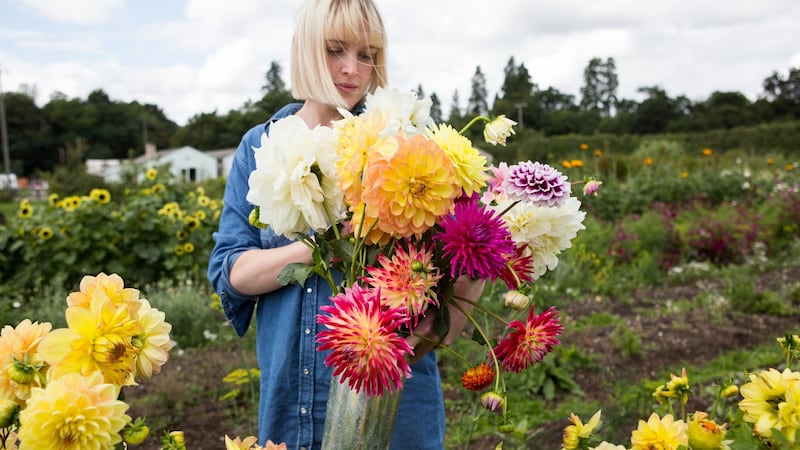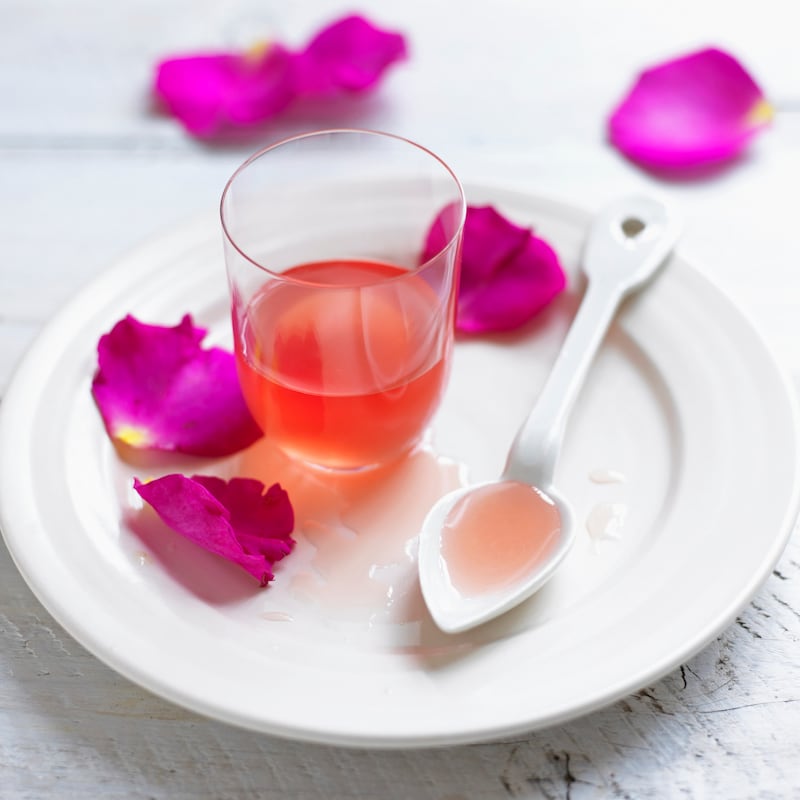August is a time of full and plenty in the garden when plots are brimming with homegrown produce and lots of late summer/early autumn flowering plants are in full bloom. To keep the show on the road, make sure to keep regularly deadheading, watering and liquid feeding container-grown flowering plants as well as showy late bloomers such as dahlias, helenium, rudbeckia and cosmos.
Other perennial species that have finished flowering can be cut back hard or (if they are short-lived annuals or biennials) lifted and put on the compost heap. Many will also have produced viable seed that can be harvested and stored for use (for example, ammi, orlaya, nigella) while some (for example, nigella, alliums) have decorative seed-heads that can be tied in bunches and then dried indoors to use later in seasonal wreaths and dried flower arrangements.
In the kitchen garden and allotment, continue to liquid-feed greedy plants such as courgettes, tomatoes, French beans and to harvest them along with carrots, beetroot, peas, spinach, turnips, cabbage and lettuce. After the recent rainfall, it’s also important to keep freshly-germinated weed seedlings in check before they get out of hand.
Dahlias are notorious for the ease with which the tubers of different varieties can accidentally get mixed-up when they’re being lifted in late autumn and overwintered in a frost-free garden shed. For the same reason newly-bought tubers can turn out to be a very different variety from that ordered, leading to glaring colour or height mismatches in the garden that are painfully obvious once they come into full bloom.

So take a little time this month to clearly label your dahlias by gently tying a label to each plant clearly marked with a waterproof pen (I use the Edding 140s). Don’t worry if you’ve forgotten its varietal name. Just a brief description of flower colour and height will make it easy to identify, especially if you back this up with a quick mobile phone snap of the plant in bloom.
Before their stalks start to fall over but once the leaves have yellowed/browned is the ideal time to harvest garlic bulbs. Ideally choose a dry day and use a garden fork to gently dig them up, shake/rub away any excess soil but leave the leaves intact before placing them in a single layer in a shallow cardboard box or tray in a warm, dry, well-ventilated shed for three to four weeks to allow them to cure/properly dry. Once properly dried, the bulbs can then be tied or plaited into bunches and stored in a cool, dry place for future use.
Self-seeded young perennials and biennials, such as linaria, Verbena bonariensis, alchemilla, geranium, aquilegia, foxgloves, euphorbia, sweet William and Mexican fleabane often appear in garden paths and borders at this time of year. Gently lifted so that their baby root balls remains intact and encased in some soil, they can be quickly potted and/or replanted into any empty spaces in the garden. Just make sure to keep them well watered until their root systems re-establish. Potted specimens also make great gifts for gardening friends.

Eat this . . .
A profusion of edible flowers are in bloom in many Irish gardens this month, many of which make a very pretty addition to the salad bowl or a colourful garnish for a summer cocktail or pudding. For some spicy heat in a salad, try the fiery flowers of nasturtium or add a cool cucumber flavour with some starry borage flowers. Rose petals can be used to make a delicious, rose-flavoured syrup to trickle over ice-cream while dahlia petals look beautiful scattered over a pavlova.
Read this . . .
Bee Quest by David Goulson (Jonathan Cape), a favourite of Laois gardener Tanguy de Toulgoët, in which the author and founder of the UK's Bumblebee Conservation Trust recounts his journeys in pursuit of some of the world's rarest and most elusive species of bees and describes some of the surprising "wild" places that they've chosen to make their home.
Dates for your Diary
Saturday, August 24th (2.30-4.30pm), Howth & Sutton Horticultural Society Autumn Show and Plant Sale, St Nessan's Community School, Baldoyle, Dublin 13, see hshs.ie for details.
Continuing until Sunday, September 1st, Teak House, National Botanic Gardens, Glasnevin, Dublin 9, Totally Terrific Tomato Festival, see Facebook.com/totally-terrific-tomato-festival/ and botanicgarden.ie for details.
Saturday August 31st, St Patrick's School hall, Church Road, Greystones, Co Wicklow, Delgany & District Horticultural Society Annual Dahlia Show with competitive classes for sweet peas, shrubs, container plants, fruit and vegetables, see delganydhs.com.
Saturday, September 7th, Kilbride Manor, Manor Kilbride, Co Wicklow, How to Grow Your Own Cut Flowers Seasonally and Sustainably, a one-day workshop with IT columnist and flower farmer Fionnuala Fallon, €150 includes two-course lunch/refreshments at Kilbride Manor plus take-home bouquet of flowers from her sustainably-managed flower farm, email theirishflowerfarmer@gmail.com for details.













